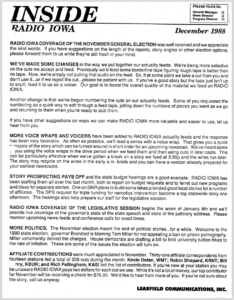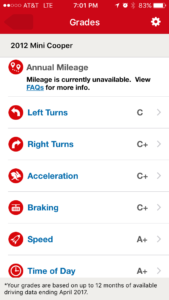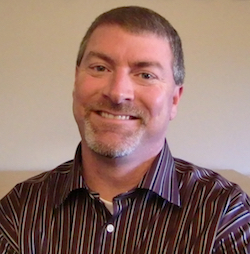 In the late 80’s I was doing affiliate relations for about 120 radio stations (in Missouri and Iowa). I had a card for each station in a Rolodex on my desk. Using a typewriter, I packed as much information on each card as possible. Station manager, program director, news director, address, phone, fax (few if any email addresses in ’87). By my right knee was a file drawer containing manila file folders for each station. This would contain copies of all correspondence; notes from phone calls and f2f visits. It was a paper world. The portable version of the Rolodex was a page with as much of the info as could be crammed on a sheet of paper. (Columns: City, GM, PD, ND, Address, Phone, Fax, etc)
In the late 80’s I was doing affiliate relations for about 120 radio stations (in Missouri and Iowa). I had a card for each station in a Rolodex on my desk. Using a typewriter, I packed as much information on each card as possible. Station manager, program director, news director, address, phone, fax (few if any email addresses in ’87). By my right knee was a file drawer containing manila file folders for each station. This would contain copies of all correspondence; notes from phone calls and f2f visits. It was a paper world. The portable version of the Rolodex was a page with as much of the info as could be crammed on a sheet of paper. (Columns: City, GM, PD, ND, Address, Phone, Fax, etc)
I had a computer on my desk but I don’t recall when I moved from DOS to Windows. But somewhere in here I was using Borland Reflex, a flat-file database management system for DOS. It was the first commercial PC database to use the mouse and graphics mode, and drag-and-drop capability in the report formatting module.
I used Reflex as a ‘customer relationship management’ program before there was such a thing (that I knew of). I was in heaven. I sorted and searched and generated reports. I used one field for notes (every phone call, letter and in-person visit).
Sometime around 1987 I was visiting Bill Weaver, the GM of KFRU in Columbia, MO, and I must have mentioned my little database. Bill showed me the program he used to manage all of his contacts: ACT! I was smitten! Did all the things I hacked out of Reflex but so much more. I immediately bought a copy and became insufferable to my co-workers.
While attending COMDEX in 1992 (Chicago), I saw what I believe was the first Windows version of ACT! $500 but I had to have it. Bought it on the convention floor.
I lived in ACT! for many years after. Probably well after Outlook took over the company network. Grown men were reduced to tears when they were forced to give up ACT!

 This has such a Pony Express feel to me, here in 2017. The idea of a monthly, printed newsletter seems… quaint. But I recall almost every company and association doing a monthly (sometimes quarterly) newsletter. Somebody spent hours writing these things, often with multiple managers “signing off” before they went out.
This has such a Pony Express feel to me, here in 2017. The idea of a monthly, printed newsletter seems… quaint. But I recall almost every company and association doing a monthly (sometimes quarterly) newsletter. Somebody spent hours writing these things, often with multiple managers “signing off” before they went out. : A couple of months ago I mentioned adding a little gizmo from my insurance company (State Farm) that tracks my driving and — depending on my grades — lowers my rates or saves me some money or something. As you can see from the screenshot below, I’m doing fine in a couple of categories and not so good in some others. I do jump off the line and brake too hard but was unaware of my hard turns. I put that on the MINI which handles so beautifully. I do zip around corners. So far all of this has saved me about $11 and change. But I am going to work on my starts/stops/turns.
: A couple of months ago I mentioned adding a little gizmo from my insurance company (State Farm) that tracks my driving and — depending on my grades — lowers my rates or saves me some money or something. As you can see from the screenshot below, I’m doing fine in a couple of categories and not so good in some others. I do jump off the line and brake too hard but was unaware of my hard turns. I put that on the MINI which handles so beautifully. I do zip around corners. So far all of this has saved me about $11 and change. But I am going to work on my starts/stops/turns. During the early days of what we then called the “World Wide Web,” there was a mood of “digital entrepreneurism.” Anybody with a minimum of technical skills could create a website. Later, when blogs became a thing, it got even easier. You could start your own newspaper or magazine or — when the bandwidth got better and the tools easier — audio and video. Anyone could create their own “content” and do so for fun or profit. That was the dream and a few made it a reality.
During the early days of what we then called the “World Wide Web,” there was a mood of “digital entrepreneurism.” Anybody with a minimum of technical skills could create a website. Later, when blogs became a thing, it got even easier. You could start your own newspaper or magazine or — when the bandwidth got better and the tools easier — audio and video. Anyone could create their own “content” and do so for fun or profit. That was the dream and a few made it a reality.